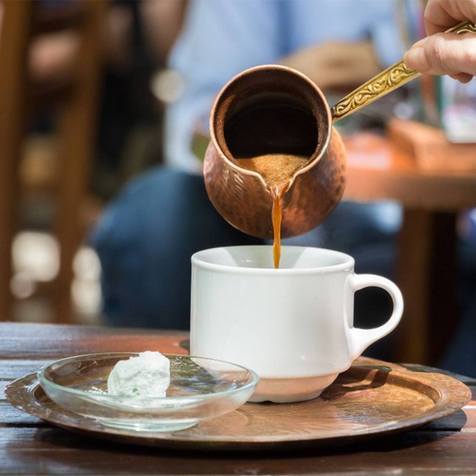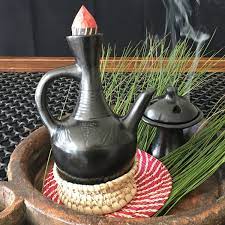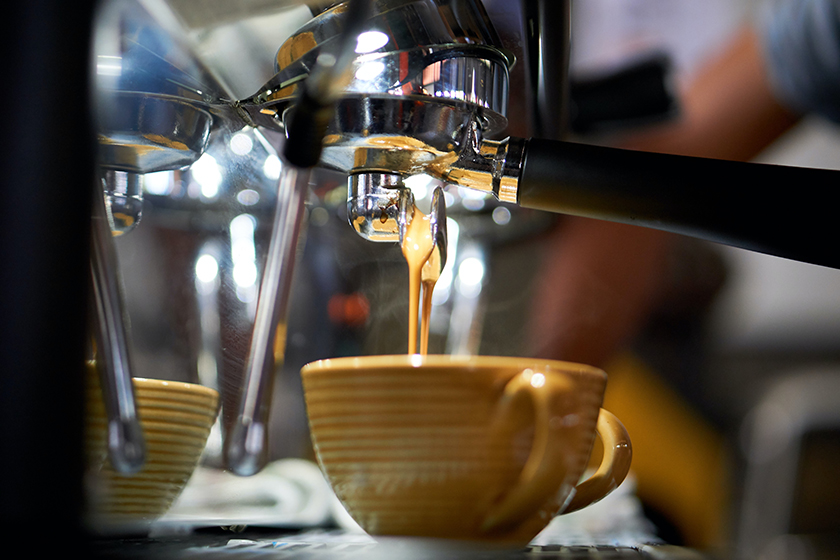Coffee, the humble bean, has captivated the hearts and minds of people worldwide. It’s not just a beverage; it’s a morning ritual, a moment of respite on a busy day, a conversation starter, and a symbol of hospitality. From the bustling coffee shops of Seattle to the traditional coffee ceremonies in Ethiopia, the love for coffee transcends borders and cultures.
According to the International Coffee Organization, worldwide, more than 1.6 billion cups are consumed daily. This global love for coffee has given rise to various brewing methods, each with unique characteristics and flavor profiles. These methods reflect the rich cultural heritage and traditions of the countries where they originated.
In this article we will look at coffee brewing techniques in different cultures.
| Key Takeaways |
|---|
| 1. Coffee brewing techniques are diverse and reflect the cultural values and traditions of the people who use them. From the Ethiopian coffee ceremony to the Greek method of brewing coffee in a briki, these methods are more than just ways to make coffee; they are cultural expressions. |
| 2. Understanding different brewing techniques allows us to appreciate the nuances and subtleties that make each cup of coffee unique. It’s a journey of discovery, a way to explore different cultures and traditions from the comfort of our kitchen. |
| 3. Coffee is deeply intertwined with culture. It’s a symbol of hospitality, a tool for social interaction, and a reflection of cultural identity. The way coffee is brewed and enjoyed can tell a lot about a culture’s values, traditions, and history. |
The Art of Coffee Brewing: A Cultural Perspective
Coffee brewing is an art form steeped in tradition and culture. Each country, each region, and sometimes even each family has its unique way of brewing coffee. These methods are often passed down through generations, preserving the cultural heritage and identity of the people.

In Turkey, coffee is brewed in a cezve, a small pot with long handle, and served in small cups where the grounds are allowed to settle. In Italy, espresso is king, brewed under high pressure, and served in small, concentrated amounts. In Sweden and Finland, coffee is often brewed in a method known as kokkaffe, where coffee grounds are boiled in water and then allowed to settle before serving.
These diverse brewing methods produce different flavors and experiences and tell a story about the people and the culture they come from.
The Importance of Understanding Different Brewing Techniques
Understanding different brewing techniques is like learning a new language. It allows us to appreciate the nuances and subtleties that make each cup of coffee unique. It’s a journey of discovery, a way to explore different cultures and traditions from the comfort of our kitchen.
Each brewing method brings out different flavors and characteristics from the coffee beans. The French press method, for example, produces a full-bodied and robust brew, while the pour-over method results in a clean and vibrant cup that highlights the coffee’s acidity and aroma.
Moreover, understanding different brewing techniques can also enhance our coffee-drinking experience. It allows us to experiment with other methods, play with different variables, and brew coffee that suits our taste preferences.
In the end, coffee brewing is more than just a means to a caffeinated end. It’s a ritual, a tradition, and a cultural experience. By exploring different brewing techniques from around the world, we’re not just learning how to make a better cup of coffee but also learning to appreciate the rich tapestry of cultures and traditions that make up our global coffee community.
Diving into Specific Cultures
In this section of the article we will now look at some coffee brewing techniques in a variety of cultures.
Coffee Brewing in Ethiopia: The Birthplace of Coffee
Ethiopia is called the birthplace of coffee, and coffee remains at the heart of Ethiopian culture. The traditional Ethiopian coffee ceremony is a unique and integral part of their social and cultural life.
The ceremony begins with roasting green coffee beans over an open flame in a pan. The roasted beans are ground using a mukecha (a wooden bowl) and a zenezena (a long, slender cylinder). The ground coffee is subsequently brewed in a jebena, a traditional clay coffee pot, and served in small, handleless cups called cini.

The Ethiopian coffee ceremony is not just about brewing and drinking coffee. It’s a social event for family and friends to come together, share stories, and enjoy each other’s company. It’s a testament to Ethiopians’ deep love and respect for coffee.
Greek Coffee Culture: The Unique Method of Brewing
Greek coffee culture is characterized by its unique method of brewing. Greek coffee, or ellinikos kafes, is brewed in a small, long-handled pot called a briki. The coffee is finely ground, almost powdery, and brewed slowly over low heat.
The coffee is served in smaller cups, and the grounds can settle at the bottom. The result is a strong, rich brew with a layer of foam on top, which is known as kaimaki. Greek coffee is often enjoyed with a glass of water and is usually accompanied by lively conversation and good company.
Greek coffee culture is not just about the coffee itself but also about the social interaction that comes with it. Coffee shops, or kafeneia, are a staple in Greek society, serving as a gathering place for people of all ages.
Cuban Coffee: A Strong and Rich Tradition
Cuban coffee, or Café Cubano, is a strong, sweet espresso drink that’s a significant part of Cuban culture. The coffee brews using an espresso machine, and sugar is added to create a thick, sweet foam known as espuma or crema.
Cuban coffee is often enjoyed in small, shot-sized cups and is typically served throughout the day. Sharing a cup of Cuban coffee is seen as a gesture of hospitality and friendship.
Cuban coffee culture is deeply ingrained in the country’s history and identity. Despite the hardships and scarcity caused by economic crises and embargoes, Cubans have always found a way to keep their beloved coffee tradition alive.
Additional Cultures: Vietnamese Coffee Culture
Vietnamese coffee culture is characterized by its unique brewing method and the use of condensed milk. Vietnamese coffee, or cà phê, brews utilizing a small metal drip filter called a phin. The coffee is strong and dark, typically served over condensed milk, resulting in a sweet and creamy cup.

Vietnamese coffee culture reflects the country’s history and its resourcefulness—the use of condensed milk dates back to the French colonial period when fresh milk was scarce. Today, Vietnamese coffee, particularly cà phê sữa đá (iced coffee with condensed milk), has gained popularity worldwide for its unique and indulgent taste.
Coffee shops are typical in Vietnam, from roadside stalls to modern cafes. They serve as a place for socialization, relaxation, and enjoying a good cup of coffee.
These diverse coffee cultures show us that coffee is more than a beverage. It’s a symbol of hospitality, a tool for social interaction, and a reflection of cultural identity. By exploring these different coffee cultures, we can gain a deeper appreciation for this beloved drink and the people who enjoy it.
Comparing Brewing Techniques
In this section we will now compare brewing techniques including similarities and differences and the impact of brewing techniques on flavour.
Similarities and Differences in Brewing Techniques
Despite the vast diversity in coffee brewing techniques worldwide, some common elements exist. Most methods involve hot water, coffee grounds, and some form of filtration. The goal is to extract the flavorful compounds from the coffee beans to create a delicious brew.
However, the differences in brewing techniques make each cup of coffee unique. These differences can be seen in the grind size, brewing time, water temperature, and brewing equipment. For instance:
- Turkish coffee uses a very fine grind
- French press requires a coarse grind
- The espresso method involves high pressure and a short brewing time
- The cold brew method involves no heat and a lengthy brewing time.
These differences in brewing techniques result in different flavor profiles. For example, Turkish coffee is known for its strong, intense flavor, while French press coffee is known for its rich, full-bodied taste.
The Impact of Brewing Techniques on Flavor
Brewing techniques have a huge impact on the flavor of the coffee. The extraction process, which is the interaction between the coffee grounds and the water, is influenced by several factors, including grind size, brewing time, water temperature, and brewing method.

For example, a finer grind size increases the surface area of the beans exposed to the water, leading to a faster extraction and a stronger brew. On the other hand, a longer brewing time can lead to over-extraction, resulting in a bitter taste.
The brewing method does also affect the flavor of the coffee. For instance, the pour-over method, which involves pouring hot water over the coffee grounds and letting it drip through a filter, produces a clean, vibrant brew that highlights the coffee’s acidity and aroma.
On the other hand, the espresso method, which involves the forcing of hot water through tightly packed coffee grounds, produces a concentrated, intense brew. This nature.com research article provides an excellent overview of how brewing techniques impact coffee flavor.
How Brewing Techniques Reflect Cultural Values
Brewing techniques are not just about making coffee; they also reflect the cultural values and traditions of those who use them. For example, the Ethiopian coffee ceremony is not just a brewing method but a social event emphasizing community and hospitality.
Similarly, the Greek method of brewing coffee in a briki is not just about making a strong, flavorful brew; it’s also about taking the time to enjoy the coffee and the company of others. This slow, deliberate process reflects the Greek value of philoxenia, or the love of strangers, deeply ingrained in Greek culture.
In Vietnam, using condensed milk in coffee is not just a flavor preference; it’s a testament to the resourcefulness and resilience of the Vietnamese people during times of scarcity.
These brewing techniques are more than just ways to make coffee; they are cultural expressions that tell a story about the people and their values. By understanding these brewing techniques, we can better appreciate the rich tapestry of coffee cultures worldwide.
Conclusion: Embracing Diversity in Coffee Brewing
Coffee brewing is a beautiful tapestry of diverse techniques with unique flavor profiles and cultural significance. From the traditional Ethiopian coffee ceremony to the strong and sweet Cuban coffee, these brewing methods reflect the rich cultural heritage and values of the people who use them.
Embracing this diversity in coffee brewing allows us to explore different cultures, learn new brewing techniques, and discover new flavors. It’s a journey of discovery, a celebration of diversity, and a testament to our shared love for coffee.
FAQs
How does coffee relate to culture?
Coffee is deeply intertwined with culture. It’s more than just a beverage; it’s a symbol of hospitality, a tool for social interaction, and a reflection of cultural identity. How coffee is brewed and enjoyed can tell much about a culture’s values, traditions, and history.
Which is a very popular coffee brewing method?
There are many popular coffee brewing methods worldwide, and the popularity often depends on the region. For example, espresso is very popular in Italy, while drip coffee is commonly used in the United States. In Turkey, coffee is traditionally brewed in a cezve, and in Vietnam, coffee is typically brewed using a phin filter.
How did coffee impact culture?
Coffee has had a significant impact on culture throughout history. It has influenced social practices, such as the Ethiopian coffee ceremony and the Italian espresso break. It has been a catalyst for social interaction, with coffee houses serving as gathering places for conversation and exchanging ideas. Coffee has also influenced economic practices, with coffee cultivation and trade playing a significant role in the economies of many countries.

Written by Robbie – Coffee Writer and Researcher at MyCoffeeBeanz.com
Robbie has over 15 years of extensive experience working in the coffee industry in marketing. As a native New Yorker he loves the hustle and bustle of a big city and enjoys nothing more than breaking up his busy day with trips to the nearest coffee shop for a double espresso. Find out more about Robbie
